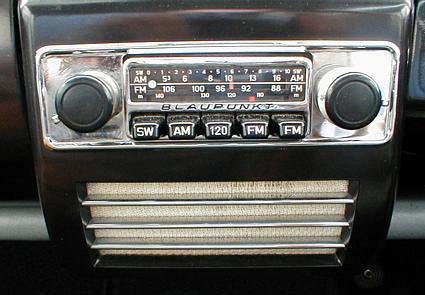Login form
Radio

Radio, system of communication employing electromagnetic waves propagated through space. Because of their varying characteristics, radio waves of different lengths are employed for different purposes and are usually identified by their frequency. The shortest waves have the highest frequency, or number of cycles per second; the longest waves have the lowest frequency, or fewest cycles per second.
In honor of the German radio pioneer Heinrich Hertz, his name has been given to the cycle per second (hertz, Hz); 1 kilohertz (kHz) is 1000 cycles per sec, 1 megahertz (MHz) is 1 million cycles per sec, and 1 gigahertz (GHz) is 1 billion cycles per sec.
Radio waves range from a few kilohertz to several gigahertz. Waves of visible light are much shorter. In a vacuum, all electromagnetic waves travel at a uniform speed of about 300,000 km (about 186,000 mi) per second. For electromagnetic waves other than radio, see Electromagnetic Radiation.
Radio waves are used not only in radio broadcasting but in wireless telegraphy, telephone transmission, television, radar, navigational systems, and space communication. In the atmosphere, the physical characteristics of the air cause slight variations in velocity, which are sources of error in such radio-communications systems as radar. Also, storms or electrical disturbances produce anomalous phenomena in the propagation of radio waves. See Wave Motion.
Because electromagnetic waves in a uniform atmosphere travel in straight lines and because the earth's surface is approximately spherical, long-distance radio communication is made possible by the reflection of radio waves from the ionosphere.
Radio waves shorter than about 10 m (about 33 ft) in wavelength—designated as very high, ultrahigh, and superhigh frequencies (VHF, UHF, and SHF)—are usually not reflected by the ionosphere; thus, in normal practice, such very short waves are received only within line-of-sight distances. Wavelengths shorter than a few centimeters are absorbed by water droplets or clouds; those shorter than 1.5 cm (0.6 in) may be absorbed selectively by the water vapor present in a clear atmosphere.
A typical radio communication system has two main components, a transmitter and a receiver. The transmitter generates electrical oscillations at a radio frequency called the carrier frequency. Either the amplitude or the frequency itself may be modulated to vary the carrier wave.
An amplitude-modulated signal consists of the carrier frequency plus two sidebands resulting from the modulation. Frequency modulation produces more than one pair of sidebands for each modulation frequency. These produce the complex variations that emerge as speech or other sound in radio broadcasting, and in the alterations of light and darkness in television broadcasting.
Although many discoveries in the field of electricity were necessary to the development of radio, the history of radio really began in 1873, with the publication by the British physicist James Clerk Maxwell of his theory of electromagnetic waves.

